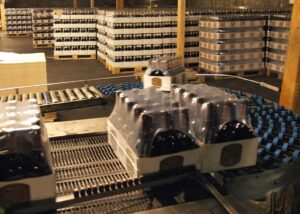After a two-year struggle due to the effects of the global health crisis, the beer industry has opportunities ahead of them to look forward to, marked by the highly anticipated return of live celebrations for Oktoberfest in 2022.
After a two-year struggle due to the effects of the global health crisis, the beer industry has opportunities ahead of them to look forward to, marked by the highly anticipated return of live celebrations for Oktoberfest in 2022.
The 187th Oktoberfest returned to Theresienwiese, the largest fairground in Munich, from September 17 to October 3. Overlooked by the 18-meter-tall bronze Bavaria statue, the festival was brought to life by grand and lively beer tents, exhilarating festival rides, as well as a scrumptious array of hearty food.

The festival historically attracted millions of visitors to Munich each year, and its cultural influence has spread widely with smaller celebrations held across the globe throughout the month of October.
With countries from the Americas to Asia also celebrating their own smaller versions of Oktoberfest, a significant increase in market demand for beer is certainly expected worldwide—and for consumers to be assured that they’ll have a cold brew in hand, beer manufacturers need to be well-prepared.
Beer Trends in a Post-Pandemic World
The beer industry was hit hard by the closure of on-premise beer consumption, so with global economies gradually reopening, experts have an optimistic outlook for certain sectors of the industry.
According to insights gathered by Beverage Industry, craft beer enjoyed an explosive growth prior to the pandemic, and although its performance in the last two years has dipped, it remains one of the strongest growing segments in the beer market. However, their potential to bounce back this year could face stiff competition from ready-to-drink (RTD) cocktails and other canned alcoholic beverages such as hard seltzers, which have taken advantage of the increased demand for variety and novelty in off-premise consumption.
The domestic beer sector in the US experienced a similar dip as the craft beer sector, but both sectors remain strong, together accounting for nearly 60% of market share. The shift in consumer preferences present new challenges for the domestic sector, which is projected to continue its decline, but larger players have already moved to diversify and enter the growing markets for novel beer formats and flavors in order to strengthen their position.
On the other hand, the imported beer market enjoyed a slight growth thanks to the shift in US consumer preferences towards greater variety as well as higher-end beer brands. The release of new products, updated packaging and marketing solutions has helped drive growth for the imported beer market in the US, and continuing this trend will be important in helping these brands to counter the projected negative effects of a depreciating US dollar.
Beer Companies are Shifting their Approach
To cater to shifting trends in on-premise beer consumption, forward-thinking manufacturers have been re-examining their business models. Retail shelves have been seeing a proliferation of flavors that have stimulated interest from new customers. Companies have been taking advantage of this to promote new flavors by educating consumers on the subtle nuances of beer products, in an effort to help their brands stand out in the market.
Retail stores such as supermarkets, discount stores and convenience stores are important distribution channels, and manufacturers have a need to find the right balance between volume and price. Market demand for smaller packs with more innovative packaging have driven up production complexity, requiring manufacturers to produce smaller batches in shorter production runs. This runs contrary to what older manufacturing lines can handle, as these are designed for high-volume, low-cost production.

Market demand for smaller packs with more innovative packaging have driven up production complexity, requiring manufacturers to produce smaller batches in shorter production runs.
The key to keeping up with these trends is to leverage the powerful capabilities of an intelligent, integrated scheduling solution. Such a solution can help beer manufacturers optimize bottlenecks in their production lines by sequencing campaigns based on:
- Expected batch formulations
- Equipment cleaning and setup on changeovers
- Outbound logistics capabilities
This complexity increases the probability of disruption, especially when there are shortages in supply and factory and delivery workers. Additionally, there is an extensive and expensive set of processes with manual tasks and decisions made by humans—and customers don’t want to incur this cost. But with proper supply chain planning and optimization software, manufacturers can build agility and resilience to ensure continuity throughout their supply chains.
Increasing demand for sustainability and regulatory pressure also necessitates that industries create a circular economy—balancing planet conservation with profit—as well as second life product capabilities. Only agile and resilient companies can establish environmentally and financially sustainable supply chains capable of thriving in today’s challenging business landscape.
So, while the challenges facing the beer industry may seem lager than life at present, making a strategic decision to transform the way they operate can help beer manufacturers draft a robust plan for an agile, resilient and sustainable supply chain.
Thirsty for more information? Learn how to plan, execute and maintain efficient supply chains with DELMIA here.

